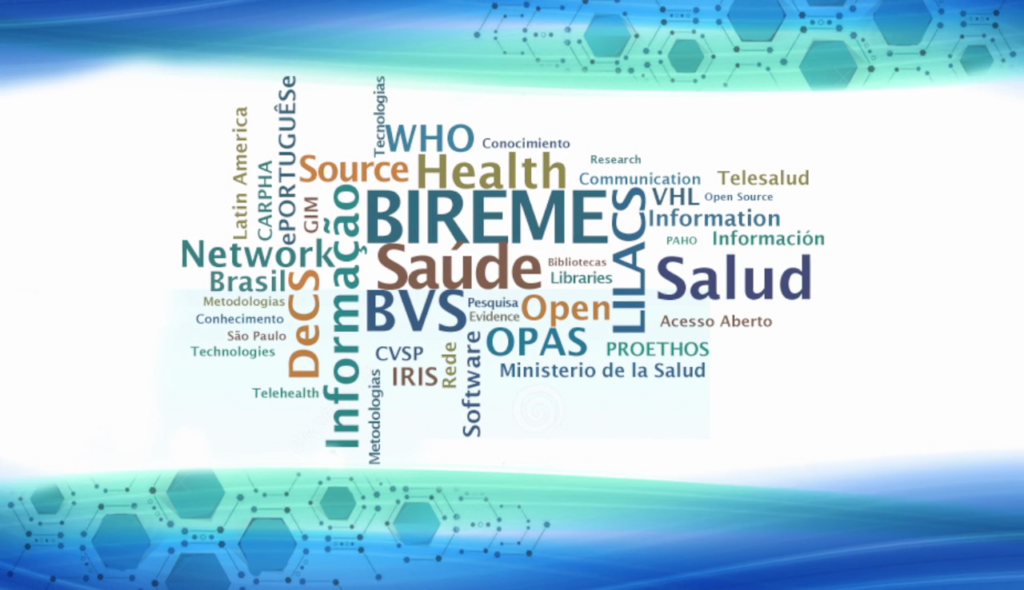PAHO/WHO recognizes that to operate effectively in a globalized world one must seek, create, and strengthen strategic alliances, networks, and associations with other stakeholders. These include the academia, research centers, health institutions and organizations and other sectors including nongovernmental organizations, bilateral and multilateral cooperation agencies, and international funding organizations, among others. The resulting associations create opportunities for the development of human resources, recompilation and exchange of knowledge and information, and contribute to improving health conditions in the Americas.
The networking strategy has been a practice maintained throughout BIREME’s history, from its start and during its 50 years of existence. In the beginning, it consisted in strategic relations with some institutions and, as time went by, the concept of networking evolved and BIREME worked with decentralized information networks integrated by a significant number of libraries and documentation centers. The introduction of the Internet favored this development and currently more than two thousand organizations integrate BIREME’s cooperation network in all Latin America and Caribbean countries (LA&C). Until 1997, the Latin-American and Caribbean Health Information System represented this cooperation network. As of 1998, with the establishment of the Virtual Health Library (VHL), these networks started to integrate and feed the VHL sources of information (VHL Network). It is important to highlight that BIREME also coordinates other networks, such as LILACS networks, and thematic networks like Nursing, Psychology, Dentistry, and others. All these networks encompass the “network of Networks” concept.
In addition to the VHL network, BIREME worked with multiple associated networks and information, research, and education initiatives, both at regional and national levels, such as EVIPNet, ePORTUGUÊSe, GIM, SciELO, Rede de Desenvolvedores (RedDes), and ProEthos, among others.

In the 50 years of BIREME, several Directors coordinated the Center with different strategies and workstyles; however, support to strengthening networking was a common denominator for them all.
Dr. Celia Zaher, director from 1991 to 1997, said that “it was extremely gratifying to lead BIREME and contribute to build and update the Center’s Network units through the First Regional Congress on Health Sciences Information, which had a definitive impact for the training of its participants”.
Abel Packer, director between 1998 and 2010 added: “BIREME occupies an important place in the history of scientific information. As a PAHO/WHO specialized center, BIREME has built a system and modus operandi of cooperative networking for the development of information management and scientific communication capabilities and infrastructures, which progressively involved – along its 50 years of operation – most education, research, and health services organizations from Latin America and Caribbean countries, and extended to other developing regions and thematic areas. With products, services, methodologies, and technologies updated and aligned with the international state-of-art, the work of BIREME and its networks increasingly expanded the end-user communities, including students, researchers, professionals, health authorities, and the general population, as well as scientific information and communication professionals, such as librarians, scientific publishers, and information sciences researchers. BIREME products are projected as regional and global public goods”.
Dr Diego Gonzalez, the current director, stated that “networking and building strategic alliances are the only way to attain synergies, increase countries’ capacities in scientific and technical information, and position the Center in its role of a PAHO/WHO specialized institution in Latin America and the Caribbean”.
Sources:
Gestão de Redes na OPAS/OMS Brasil: Conceitos, Práticas e Lições Aprendidas. Organização Pan-Americana da Saúde. Brasília, 2008. http://www.mpprio.com.br/downloads/peterpfeiffer_paso-a-paso_es.pdf
Guia da BVS 2011. Available at: http://modelo.bvsaúde.org/wp-content/uploads/Guia_da_BVS_2011_pt.pdf).